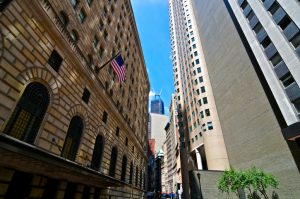The Federal Reserve Returns to Creating Money to Bail-Out Banks, Spending $75 Billion per Day!
The comments below are an edited and abridged synopsis of an article by Wall Street on Parade
The Federal Reserve Bank of New York has said that its interventions in the overnight repo lending market will be a longer-term action. The Fed has effectively returned to QE, where it buys up Treasuries, federal agency debt and mortgage-backed securities from financial institutions in exchange for loans.

The program has been extended to at least October 10 and likely thereafter in one form or another. The Fed will be pumping in $75 billion daily in overnight repo loans, while infusing $30 billion in 14-day term loans three times a week for a total of $90 billion in term loans.
The fact that there are one or more financial firms needing $30 billion on a 2-week basis, and they can’t get it from anyone but the Fed, isn’t confidence inspiring.
The necessity of Fed interventions is being blamed on temporary forces like a loss of liquidity from corporations paying their taxes for the quarter and large Treasury auctions, where primary dealers are forced to buy under contracts with the US Treasury. But these explanations do not jive with the huge deposit bases of four of the biggest American banks in the world.
The Fed borrowed $53 billion during the first day of the intervention (September 17) from the $75 billion offered. Now that the Fed is offering $30 billion in additional 2-week loans, the question is: Is one bank tapping the spigot more than the others? Is a financial institution in distress? If so, shouldn’t the public know why?
A 2011 audit of the Fed’s loans to Wall Street during the 2008 financial crisis revealed that the Fed had secretly made revolving loans totaling $8.95 trillion, but 63% of that went to just three Wall Street firms: Citigroup ($2 trillion); Morgan Stanley ($1.9 trillion); and Merrill Lynch ($1.775 trillion). The rationale from the Fed that it made these loans to help banks return to lending to businesses to help the economy is bogus. Morgan Stanley and Merrill Lynch were predominantly retail brokerage firms with millions of trading clients.
Thus, these Fed loans looked suspiciously like a bailout of margin loans and trading accounts.
